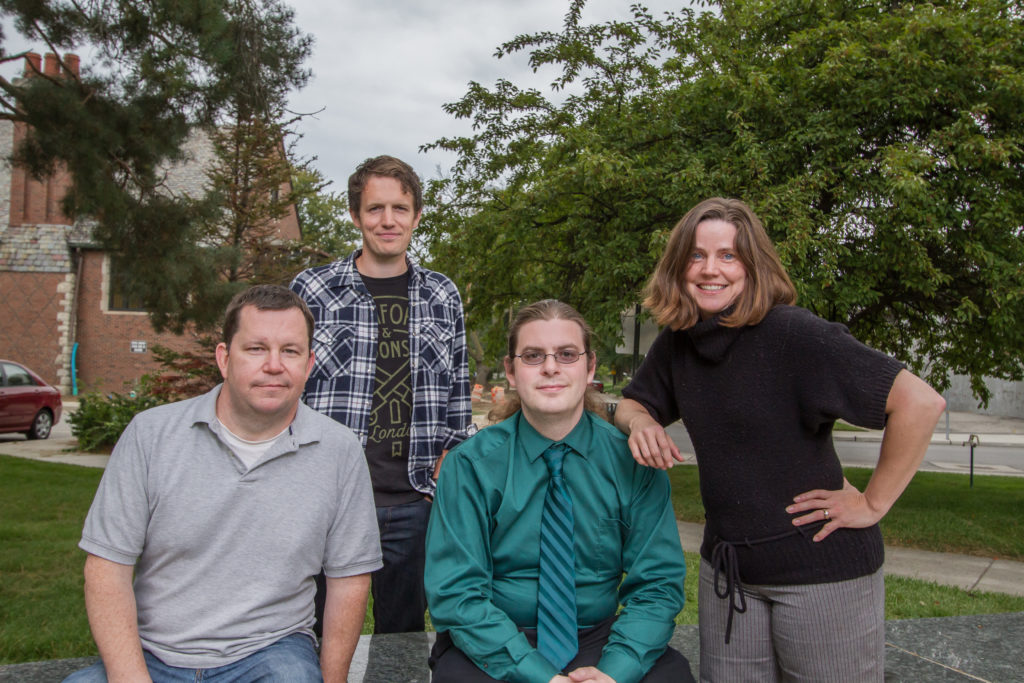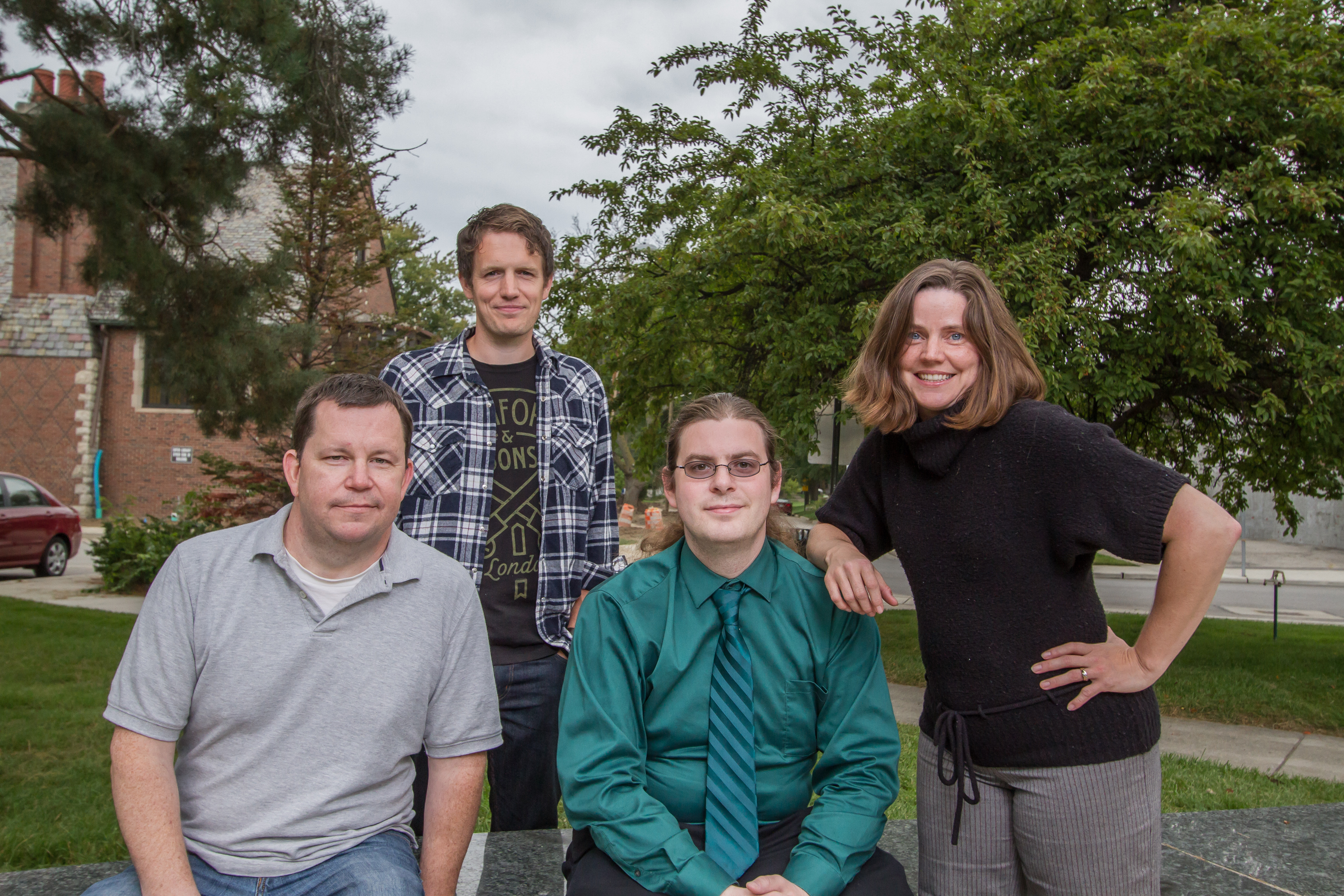
It doesn’t take millionaires, big companies or even an act of government to create positive change in Toledo. Sometimes all it takes is an idea, a few neighbors and 100,000 poets.
Steeped in decades of ample tradition stretching from the old Jeep plant to Monroe Street and beyond, the Sylvania Avenue Neighbors were formed this past spring after a few friends talked about a simple idea: making a good neighborhood even better.
“It was exciting to meet more and more people who think the same thing,” said Greg Lyons, Sylvania Avenue Neighbors president. “We’re really doing it on our own. The only way we can move and rally people is to stop being negative, and do something positive and creative.”
This new organization is committed to engaging businesses, churches, schools and its residents all along Sylvania Avenue to work for the betterment of this expansive neighborhood.
One of many events the group plans to stage, “100 Thousand Poets for Change,” is part of an international grassroots educational effort focusing on the arts, especially poetry, music, and the literary arts. Slated for 2-7 p.m. Sept. 27, it will be held near the West Toledo Branch Library, a place many consider as the cornerstone of this proud neighborhood.
“Poets” events are being held worldwide that day, each one being encouraged to focus on issues that have local importance, combining social activism with poetry.
“That sounds very explosive, but if you have a local concern or issue, artists need to have a way about dealing with that local issue,” said event organizer Jonie McIntire. “This is sort of a way to get artists into a situation where they can be more active in their communities and that artists contribute in more ways than painting or poetry.”
This year will mark Toledo’s fourth “Poets” event, but its first in a neighborhood setting with a theme focused on the environment.
“This really fits in with the larger goal of Toledo, which is part of our theme this year,” McIntire said. “There is plenty to talk about there. We wanted to bring attention to the potential in Toledo. We want to go after those things and start fixing them.”
The Sylvania Avenue Neighbors recognize they have plenty of positive assets up and down their notable corridor: a beautiful library, venerable churches, classic restaurants, manufacturing and local homegrown businesses. They also tout its accessibility, and believe everything a resident needs is within walking distance.
“If you look at the arrangement of businesses along there, there’s so much potential,” said Sean Nestor, president of the Phoenix Earth Food Co-op and vice president of the Sylvania Avenue Neighbors. “We have a great street.”
Thankfully the group benefits from active business leaders mixed in with community members all focused on the same goal.
“We’re slowly building an identity based on what we already find prevalent in our neighborhood,” Nestor said. “The goal is to merge culture and local independent businesses and talk together collectively. I think there’s just so much to look forward to.”
Knowing that the arts is one of Toledo’s strengths, the association is also looking at other local entities – like LeSo Gallery on the East Side – and what they’re doing with art and culture. They’re admittedly influenced by other similar groups around Toledo.
They’re also finding support from Toledo City Council, and hope for increased dialogue regarding the future of Sylvania Avenue. The stretch is distinct in that it spans the domain of three City Council members.
The neighborhood remains every bit ethnic and blue collar through its innate ties to the old Jeep plant. Residents include numerous retired Jeep workers, and they’re proud of their identity. Many are also encouraged to see the former site being developed and reborn.
“I think it’s great that is happening,” Lyons said. “It’s good for the neighborhood and would be good to have something in close proximity that will supply jobs. There’s always so much stress on blight and jobs, and those things are important, but there’s more to life than that.”
The group also owes every bit of its beginnings to Sam Melden, a neighborhood resident who has taken the somewhat rare approach of simply getting to know his neighbors. In a busy world where people keep to themselves more and more, Melden said he realizes his method takes time, but it’s all in an effort to “create a sense of place.”
“You just have to start doing it,” he said. “My personal belief is that the neighborhood is one of the most underutilized assets in our world. Our culture has gone further and further away from it. Any momentum you want to create, you start in a neighborhood. You have to start with what’s already here and build around it.
“We talk all the time how we want to be on offense, not defense. We feel like often like there’s not enough conversation. There’s violence all over the place and blight, but then there are opportunities to create something rather than responding to the negative things. We believe in the concept of a neighbor.”
Melden previously served as Food for Thought’s chief thought officer, but recently was named executive director of the Center for Servant Leadership, located right on Sylvania Avenue. Thus, he now lives and works in the same neighborhood.
The Sylvania Avenue Neighbors trust in their work and insist it’s critical, as it can strengthen the city’s economy. Another factor it can strengthen – something more difficult to measure – is attitude.
“The way people talk about the city they live in reflects their outlook in life,” McIntire said. “There was all this negativity and I thought, we’re going to drown or we have to reach out and get out of this. I have to love where I live to remind myself that there’s hope everywhere.”
“It’s that sense of place that drives them. They don’t want to go somewhere else for it. They don’t want to buy it. They don’t want to say their neighborhood doesn’t have it.”
They simply want to create it.
“I want to be a part of creating a neighborhood that is inclusive, welcoming, honest and real,” Melden said. “There are struggles. I’m not interested in figuring out a way to gentrify a part of Toledo to make it more comfortable for any one group of people. I want it to be an honest expression of everyone and the neighborhood.”
For more information, visit saneighbors.org or “100 Thousand Poets for Change” on Facebook.























